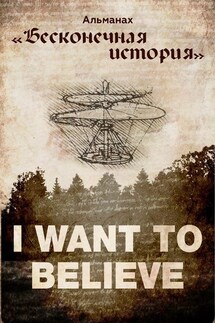Mistake of Gods - страница 10
Praise the Lord, my soul,
and forget not all his benefits—
who forgives all your sins
and heals all your diseases,
who redeems your life from the pit
and crowns you with love and compassion
Psalm, 102:19, 103:1–4
But will God really dwell on Earth?
The heavens, even the highest heaven,
cannot contain you
3 Kings, 8:27
On Earth, direct descents from Celestials established first dynasties. In the time before the Flood, Atlantis was the most powerful state, which they recreated on Earth, whereas prevailing after the Flood were Sumerian, Indian, Chinese and American Indian civilizations.
Rulers of the ancient China were believed to be the descendants from «Horned Sons of Sky», who came down to Earth in «Firedrakes». The ancient name of China is translated as «the land of bulls».
It is also worth mentioning, that the name of India is translated as the Spouse of Diw, or the Sacred Cow. Diw was the Slavic pagan God pictured as a Horned Bull-man that people often called Ivan Bykovich, and this again confirms the unbreakable connection between Slavic people and India with its cultural traditions. Slavic also named Diw as Svarog, or the Sacred Horn.
There was time when scientists believed it is the Sun that gave birth to all the objects in the Solar system. However, spectral analysis of the Sun revealed that at least twenty heavy chemical elements present on Earth and Mars, but are missing on Sun. Thus, the Sun could not be the parent of those planets. Jupiter has very close chemical composition, apparently being the parental object for both Earth and Mars. Both those planets originally were orbiting around Jupiter, but later were moved to orbit around the Sun.
Probably, the Sun was parental for only three bodies: Mercury, Venus and the Moon. All those bodies either do not rotate around their own axes, or do it very slowly, as in case with Venus, which has the period of rotation around its own axis lasting for more than two hundred days on Earth.
At present, the Solar system is considered to be a heterogeneous formation of five stars: Uranus, Neptune, Saturn, Jupiter and the Sun, as well as the bodies they gave birth to. Besides, there are smaller space objects in the Solar system, like comets, which might have arrived to us from deep space. Four of those stars already ceased their activity and do not shine anymore. Only on Saturn, and in large part of Jupiter, there are residual noise storms, which are also active on the Sun.
Interestingly, some ancient legends disclose the Cosmology theme in details. For example, the legends of American Indians tell that there were other civilizations before our civilization, and those others were almost fully disappeared as result of space disasters, like the appearance of new Suns. What shines on us now is the fifth Sun, which shall not be the last one, and somewhere, inside our Solar system, a new, sixth, Sun is getting ready to appear. This is not in a conflict with the modern science, too.
Surprisingly, the ancient Sumerian tales count the planets in Solar system starting from its periphery; for example, Earth has the number seven, Mars is the sixth planet, and the first numbers are assigned to planets, which are peripheral in the Solar system. There is an opinion that the planets might have been counted in such specific order by someone passing them inside a space vessel on their way to Sun, the center of the Solar system. Such impression becomes even stronger, as we read descriptions of those planets, which are remote from us, and almost invisible to us, as for their surface relief and color.









